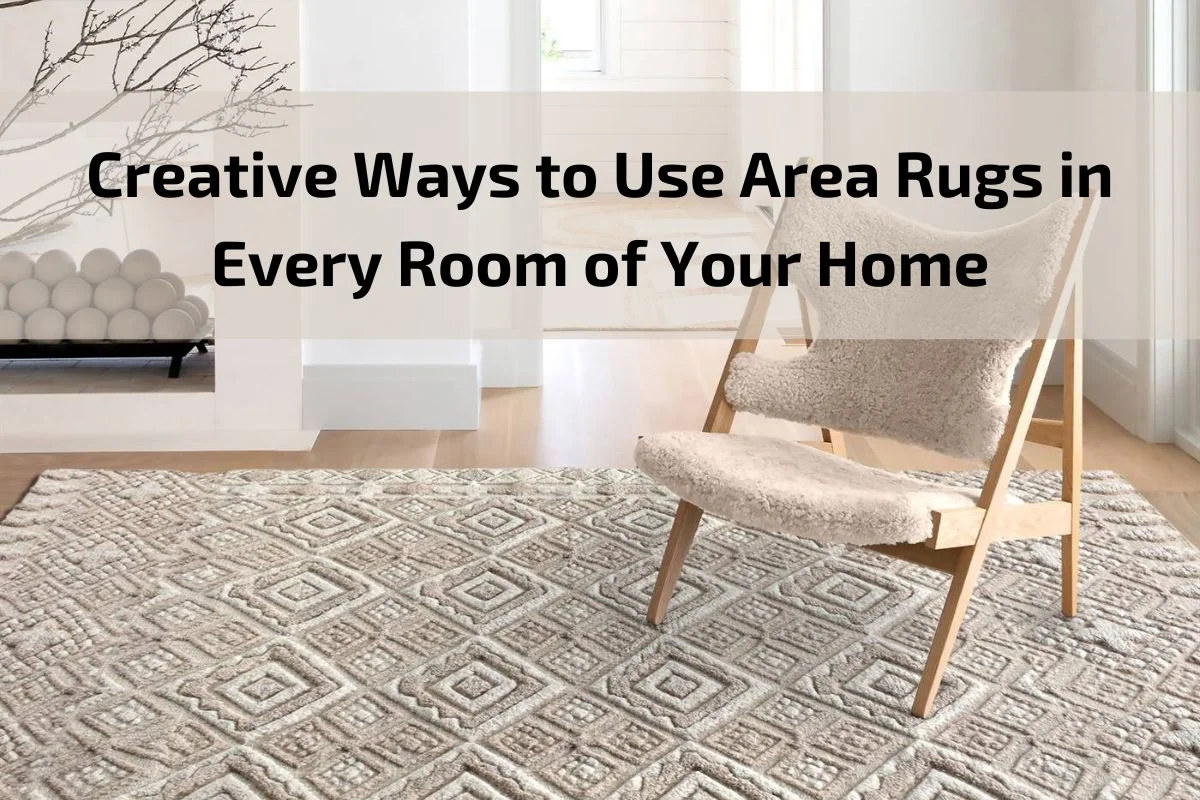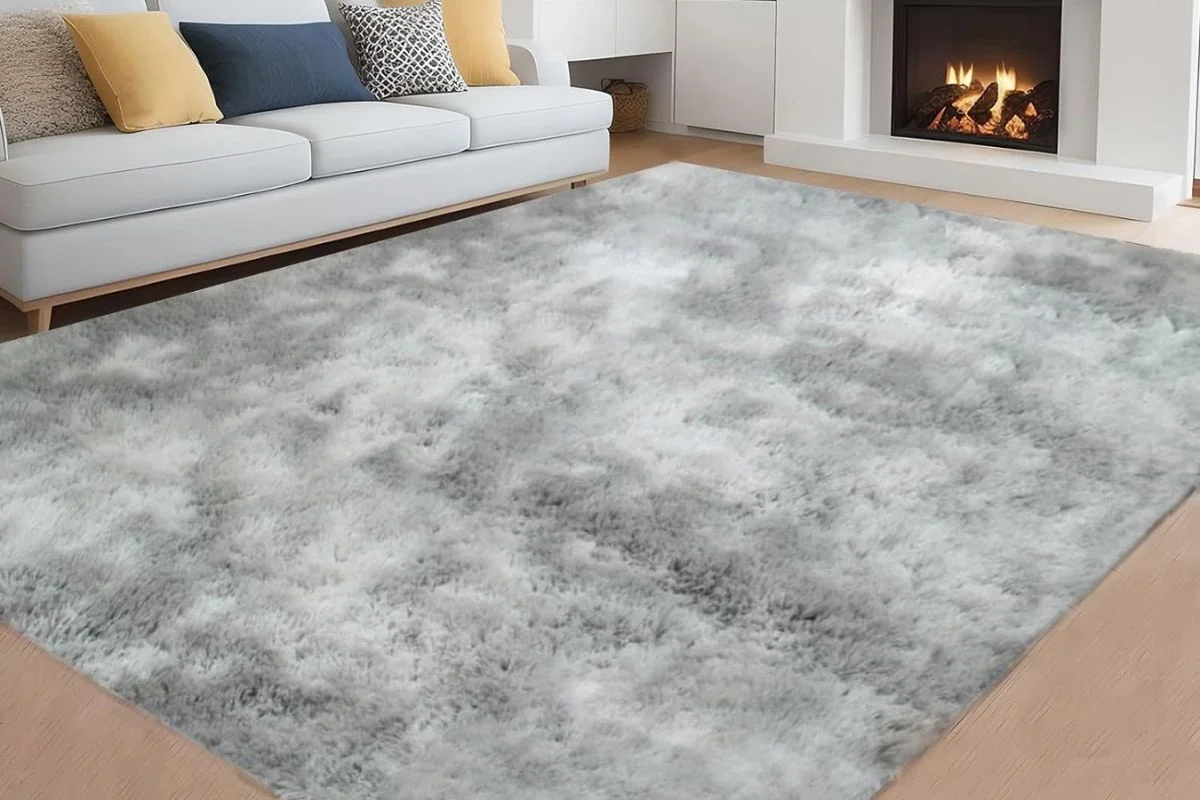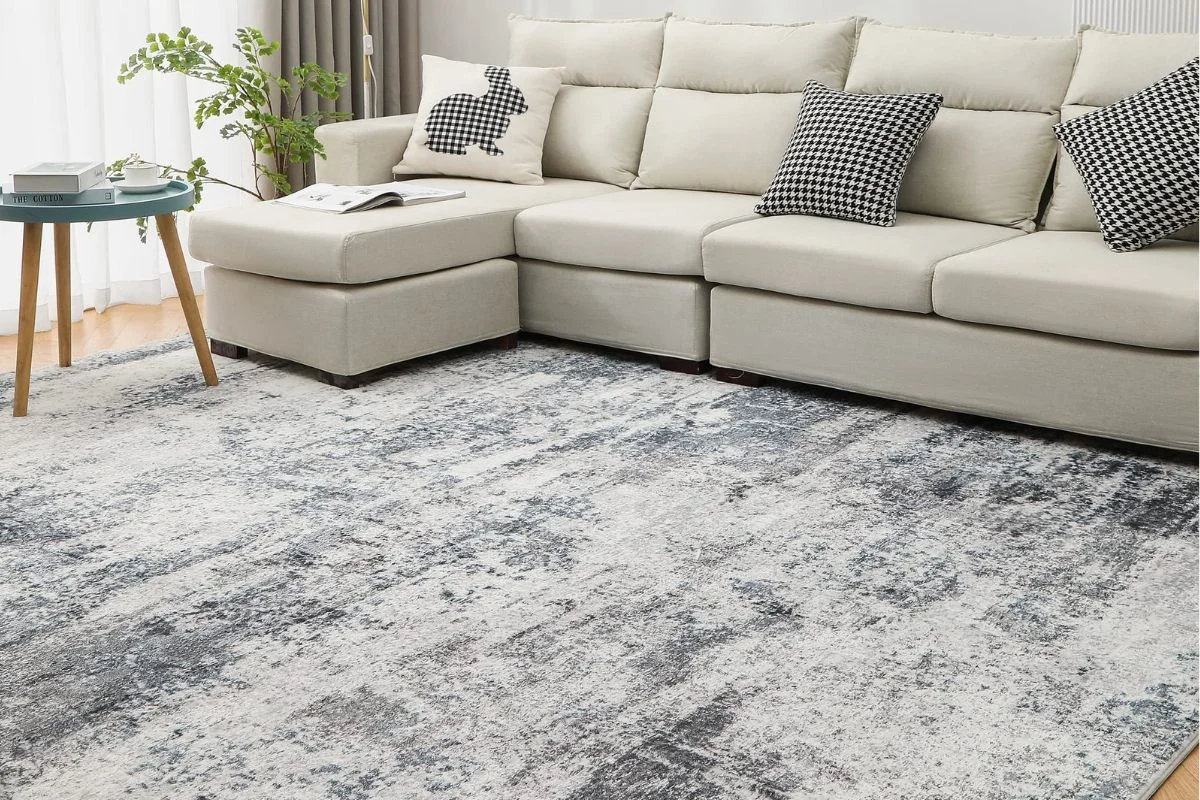
Area rugs are more than just functional floor coverings – they’re versatile design elements that can transform the look and feel of any room in your home. From adding warmth and texture to defining spaces and tying together decor schemes, area rugs offer endless possibilities for creative expression. Whether you’re looking to infuse a touch of luxury into your living room or add a pop of color to your bedroom, area rugs can be used in imaginative ways to enhance the ambiance and functionality of every space.
In this guide, we’ll explore some innovative and creative ways to incorporate area rugs into every room of your home. From the foyer to the kitchen, the bedroom to the home office, we’ll discuss how area rugs can serve as focal points, accent pieces, and practical solutions for various design challenges. Get ready to unleash your creativity and discover the transformative power of area rugs in interior design.
Brief overview of the importance and versatility of area rugs in interior design
Area rugs hold a significant role in interior design due to their importance and versatility. They serve as more than just floor coverings, offering various benefits that enhance the aesthetic appeal and functionality of living spaces. These rugs provide warmth, comfort, and a sense of coziness to rooms while also defining and delineating different areas within a space. Moreover, area rugs serve as focal points, adding texture, color, and visual interest to interiors. Their ability to tie together disparate elements of décor and furniture makes them invaluable tools for achieving cohesive design schemes. In essence, area rugs play a crucial role in creating inviting, stylish, and harmonious environments in homes and other interior settings.
The Impact of Area Rugs in Interior Design
Area rugs wield a significant influence on the overall aesthetic and functionality of interior spaces. Their presence goes beyond mere floor coverings, as they contribute to defining the style, ambiance, and character of a room. Here’s how area rugs make a profound impact in interior design:
Defining Spaces: Area rugs act as visual markers that define specific areas within a room, such as seating arrangements in the living room or dining spaces in an open-concept layout. By delineating these zones, area rugs help organize and structure the space, making it more navigable and inviting.
Adding Texture and Dimension: The texture of an area rug can introduce tactile interest and depth to a room’s design. Whether it’s the plushness of a shag rug or the intricate patterns of a flat-weave rug, the texture of an area rug contributes to the overall sensory experience of the space.
Enhancing Visual Appeal: Area rugs serve as focal points that draw the eye and anchor the design scheme of a room. They can add a pop of color, introduce pattern and contrast, or complement existing decor elements, thereby elevating the visual appeal of the space.
Creating Coziness and Comfort: The softness and warmth provided by area rugs create a cozy atmosphere that encourages relaxation and comfort. In living rooms, bedrooms, and other gathering spaces, area rugs invite people to gather and linger, fostering a sense of intimacy and connection.
Absorbing Sound: Area rugs help absorb sound waves, reducing echoes and minimizing noise levels within a room. This is particularly beneficial in large, open spaces with hard flooring surfaces, where sound tends to reverberate.
Protecting Floors: Area rugs act as protective barriers that shield floors from scratches, stains, and wear and tear caused by foot traffic and furniture movement. They help preserve the integrity of flooring materials, extending their lifespan and minimizing maintenance requirements.

Practical Tips for Choosing the Perfect Area Rug
Choosing the perfect area rug requires careful consideration of various factors to ensure it complements your space and meets your practical needs. Here are some practical tips to guide you in selecting the ideal area rug:
Consider Room Size and Layout: Measure the dimensions of your room and consider its layout before choosing an area rug. Determine whether you want the rug to cover the entire floor or only a specific area, such as beneath furniture or in a seating arrangement.
Select the Right Size: Choose a rug size that harmonizes with the scale of your room and furniture. As a general rule, leave a border of 18-24 inches between the edge of the rug and the walls to create a balanced look. In dining areas, ensure the rug extends beyond the edges of the table to accommodate chairs when they are pulled out.
Identify the Focal Point: Determine the focal point of the room and use the area rug to anchor and enhance it. For example, in living rooms, center the rug under the coffee table or seating arrangement to define the conversation area and draw attention to the focal point.
Consider Rug Material and Texture: Choose a rug material and texture that aligns with your lifestyle and design preferences. Options include wool, cotton, jute, sisal, synthetic fibers, and blends. Consider factors such as durability, ease of maintenance, and comfort underfoot when selecting the material.
Explore Patterns and Colors: Select a rug pattern and color scheme that complements the existing decor and enhances the overall aesthetic of the room. Bold patterns and vibrant colors can add visual interest and personality to the space, while neutral tones and subtle designs provide versatility and timeless appeal.
Think About Maintenance: Consider the maintenance requirements of the rug, including cleaning and upkeep. High-pile rugs may trap more dirt and require regular vacuuming, while low-pile rugs are easier to clean and maintain. Choose a rug that suits your lifestyle and maintenance preferences.
Test Before Buying: Whenever possible, test the rug in your space before making a final decision. Consider ordering swatches or borrowing sample rugs to see how they look in different lighting conditions and against your existing furniture and decor.
Set a Budget: Determine your budget for the area rug and explore options within your price range. Keep in mind that quality rugs may be more expensive but offer better durability and longevity, making them a worthwhile investment in the long run.
Exploring Different Materials Used in Crafting Area Rugs
Area rugs come in a variety of materials, each with its own unique characteristics and benefits. Understanding the different materials used in crafting area rugs can help you make an informed decision when selecting the perfect rug for your space. Here’s a closer look at some of the most common materials used in crafting area rugs:
Wool: Wool is a popular choice for area rugs due to its natural softness, durability, and resilience. Wool rugs are known for their luxurious texture, excellent insulation properties, and ability to resist stains and crushing. They are ideal for high-traffic areas and provide warmth and comfort underfoot.
Cotton: Cotton rugs are lightweight, versatile, and easy to clean, making them a practical option for casual spaces such as kitchens, bathrooms, and children’s rooms. Cotton rugs are available in a wide range of colors and patterns and offer a soft and comfortable feel underfoot.
Silk: Silk rugs are prized for their lustrous sheen, exquisite craftsmanship, and luxurious texture. Silk fibers are delicate and fine, creating intricate patterns and designs that shimmer in the light. Silk rugs add elegance and sophistication to formal living rooms, dining areas, and bedrooms.
Jute and Sisal: Jute and sisal rugs are made from natural plant fibers that are sustainable, eco-friendly, and biodegradable. These rugs have a rustic, textured appearance and are known for their durability and strength. Jute and sisal rugs are great for adding warmth and texture to casual and coastal-inspired interiors.
Synthetic Fibers: Synthetic fibers such as polypropylene, polyester, and nylon are durable, affordable, and easy to maintain. These rugs are resistant to fading, staining, and moisture, making them suitable for outdoor spaces, high-traffic areas, and homes with pets and children. Synthetic rugs mimic the look and feel of natural fibers at a fraction of the cost.
Blend of Materials: Many area rugs are crafted from a blend of different materials to combine the best properties of each fiber. For example, wool and silk blends offer the softness of wool with the sheen of silk, creating luxurious rugs with enhanced durability and texture.
Area Rugs for Every Room: Ideas and Inspirations
Area rugs are versatile design elements that can enhance the aesthetic appeal and functionality of every room in your home. Here are some ideas and inspirations for incorporating area rugs into different rooms:
Living Room: In the living room, a large area rug can anchor the seating area and define the space. Choose a rug that is large enough to accommodate all the furniture legs or opt for a rug that sits entirely beneath the coffee table and front legs of the sofa and chairs. Consider bold patterns or vibrant colors to add personality and visual interest to the room.
Bedroom: In the bedroom, an area rug can add warmth and softness underfoot, especially if you have hardwood or tile floors. Place a plush rug beside the bed to create a cozy landing spot for your feet in the morning. Alternatively, opt for a rug that extends beyond the sides of the bed to frame the sleeping area and add a touch of luxury.
Dining Room: In the dining room, choose a rug that accommodates the size and shape of your dining table and chairs. The rug should extend beyond the edges of the table to allow chairs to slide in and out comfortably. Consider a durable rug material that can withstand spills and stains, such as wool or synthetic fibers.
Kitchen: In the kitchen, area rugs can add color, texture, and warmth to the space while also providing cushioning for your feet while standing at the sink or stove. Opt for a low-pile rug that is easy to clean and maintain, such as a flat-weave cotton or synthetic rug. Consider placing a rug in front of the sink or in high-traffic areas for added comfort and style.
Entryway: In the entryway or foyer, an area rug can make a welcoming first impression for guests and serve as a transition from the outdoors to the indoors. Choose a durable rug material that can withstand dirt, moisture, and heavy foot traffic, such as jute, sisal, or a synthetic blend. Consider a bold pattern or a colorful rug to make a statement in the entryway.
Home Office: In the home office, an area rug can help define the workspace and add comfort underfoot during long hours of work. Choose a rug that complements the decor of the room and provides a soft landing spot for your office chair. Consider a rug with a low pile or flat weave that won’t interfere with the movement of your chair.
Maintenance and Care Tips for Area Rugs
Proper maintenance and care are essential for prolonging the life and beauty of your area rugs. Here are some maintenance and care tips to keep your rugs looking their best:
Regular Vacuuming: Vacuum your area rugs regularly to remove dust, dirt, and debris that can accumulate over time. Use a vacuum cleaner with adjustable suction and a brush attachment to gently clean the rug without causing damage to the fibers.
Rotate Your Rugs: Rotate your area rugs regularly to ensure even wear and tear. Rotate rugs once or twice a year, or more frequently in high-traffic areas or areas exposed to direct sunlight. This helps prevent fading and extends the lifespan of your rugs.
Spot Cleaning: Attend to spills and stains promptly to prevent them from setting into the fibers of your rug. Blot spills with a clean, dry cloth to absorb excess liquid, then gently dab the area with a mixture of mild detergent and water. Avoid rubbing the stain, as this can spread it further.
Professional Cleaning: Consider professional cleaning for your area rugs every 12 to 18 months, depending on usage and traffic. Professional cleaners have the expertise and equipment to deep clean rugs and remove embedded dirt, stains, and odors effectively.
Protect Against Sunlight: Minimize exposure to direct sunlight, as prolonged exposure can cause fading and discoloration of your area rugs. Use window treatments such as curtains or blinds to block out UV rays and protect your rugs from sun damage.
Use Rug Pads: Place rug pads underneath your area rugs to provide extra cushioning, prevent slipping, and protect your floors. Rug pads also help extend the life of your rugs by reducing friction between the rug and the floor.
Shake Out Your Rugs: Take your area rugs outdoors periodically and shake them out to remove embedded dirt and dust. Hang rugs over a railing or clothesline and beat them gently with a rug beater or broom to loosen dirt and debris trapped in the fibers.
Store Rugs Properly: If you need to store your area rugs for an extended period, clean them thoroughly and roll them up with the pile facing inward to protect the fibers. Store rugs in a cool, dry place away from direct sunlight, moisture, and pests.
Conclusion
In conclusion, area rugs are more than just floor coverings—they are essential elements of interior design that add warmth, comfort, and style to any space. From the living room to the bedroom, dining area to entryway, area rugs have the power to transform the look and feel of a room while also providing practical benefits such as sound absorption and floor protection.



